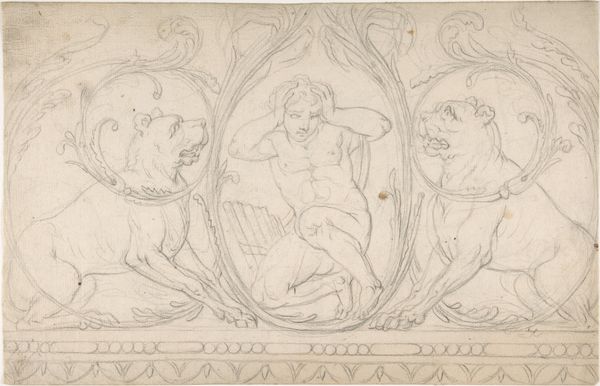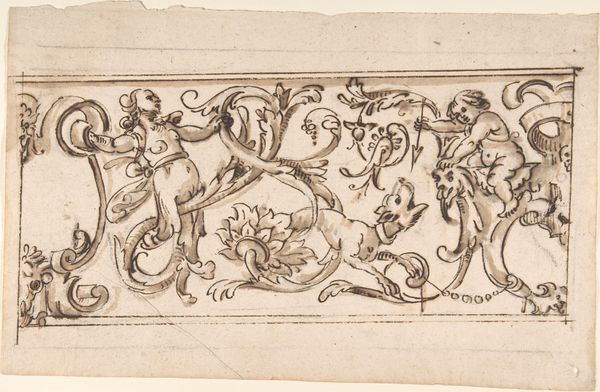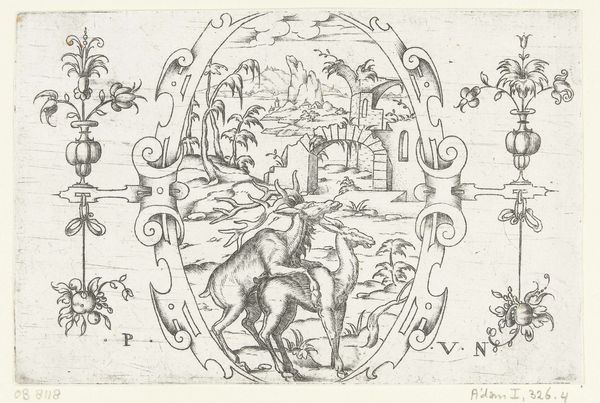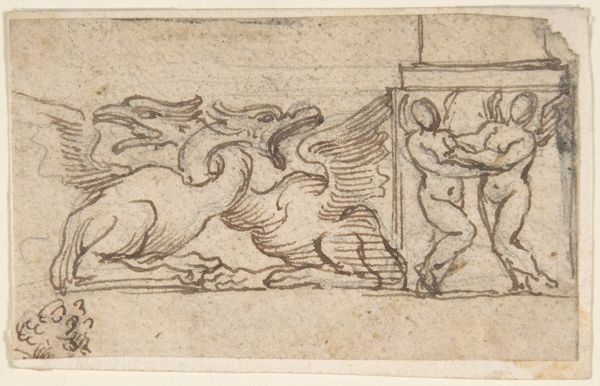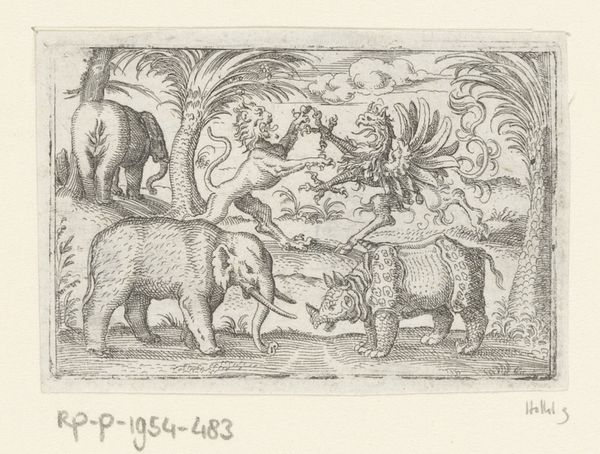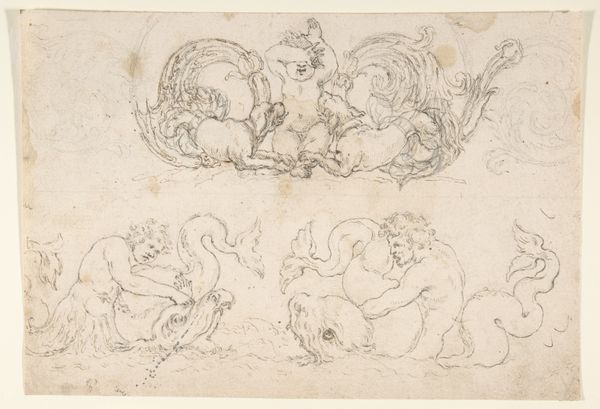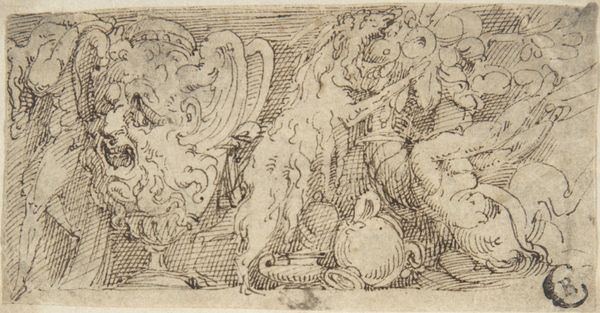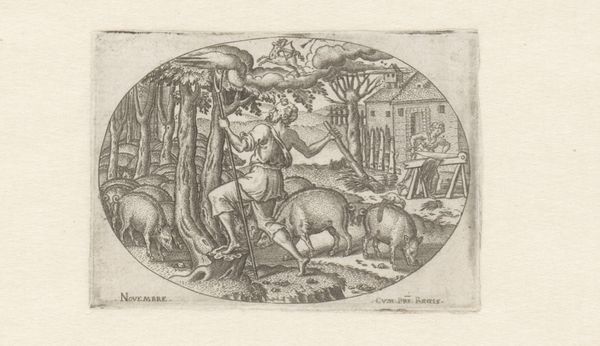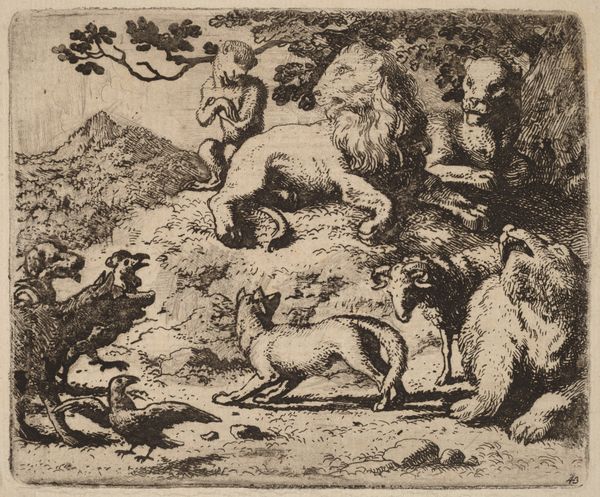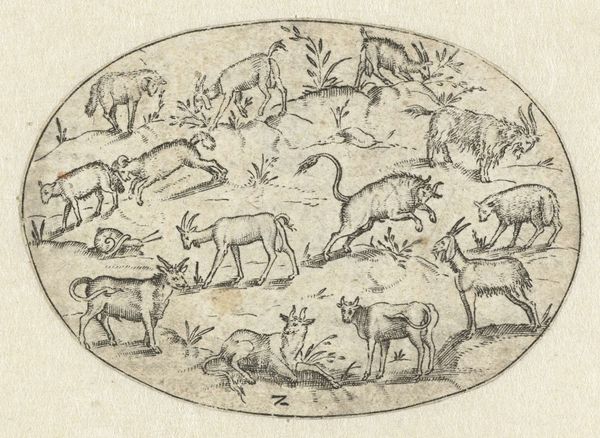
drawing, ornament, ink, pen
#
drawing
#
ornament
#
ink drawing
#
pen drawing
#
landscape
#
boy
#
figuration
#
ink
#
geometric
#
classicism
#
pen
#
history-painting
Dimensions: sheet: 5 1/8 x 7 1/4 in. (13 x 18.4 cm)
Copyright: Public Domain
Curator: At the Metropolitan Museum of Art, we have "Ornament Containing a Boy and Some Sheep," an intriguing pen and ink drawing created by an anonymous artist between 1775 and 1825. Editor: My immediate impression is how decorative, and yet restrained, it feels. The careful lines and limited shading evoke a sense of precision. Curator: Exactly. We see this ornamental style rooted in Classicism and a broader movement that sought a return to the artistic principles of ancient Greece and Rome. Considering the turbulent revolutionary climate of the late 18th century, such idealized images of pastoral harmony could have offered a form of escapism, a vision of social order. Editor: Absolutely, though let’s not ignore the material conditions! Ink drawings like this were often preparatory sketches, intended as guides for artisans producing functional items. The focus here would have been on the craft involved in translating this design onto, say, ceramics or textiles, reflecting the artisan's skill and labor in translating the artist's initial idea. Curator: Right, it pushes us to consider what's represented: the child, the lambs. Who were these idyllic images for? Was it only for the aristocracy to further enforce these social structures and who was able to possess them at this time? Editor: And to ask what meanings the act of drawing had. The very *process* of sketching these refined, looping forms involves repetitive hand motions – there's a physical component to the artistic work that’s easily missed when looking at the finished product. What paper stock did they have? How long did the ink dry? Curator: The artwork prompts further thought. The ornamental elements could symbolize social hierarchies, a visual vocabulary employed to promote certain values. What are we consuming when viewing art? How do they play a role? Editor: Indeed. This close examination reveals an underlying network that connects the hand that makes, to the product's end result, highlighting art not as autonomous object but product of social and material relationships. Curator: Absolutely. Through our different lens we can understand the deeper implications of these deceptively “simple” images, inviting us to rethink the artistic social contexts surrounding artistic pieces and meanings of such scenes. Editor: Yes, bringing it all together, looking past the final imagery reveals a narrative of how objects are constructed and consumed, emphasizing social circumstances rather than seeing it as an independent artwork.
Comments
No comments
Be the first to comment and join the conversation on the ultimate creative platform.

